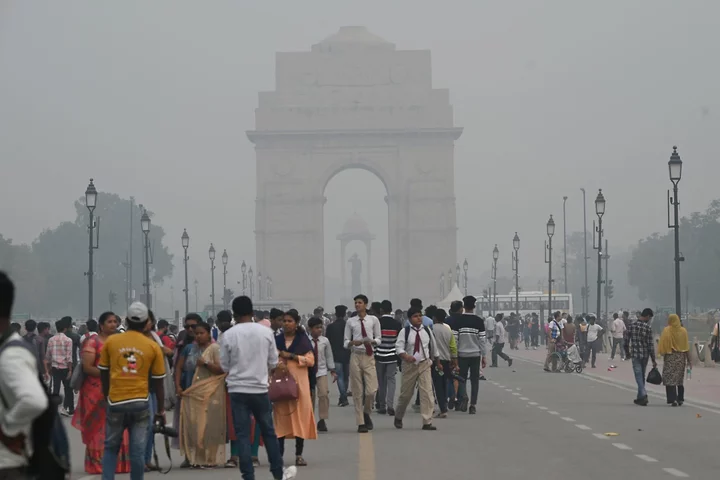Farm fires in the north Indian agrarian states of Punjab and Haryana declined over the past two years, satellite data show, a silver lining for the region struggling with seasonal smog.
After the harvesting the summer crops, farmers burn crop residues to speed up the sowing cycle, generating smoke that is swept toward the nearby cities. This year, the number of incidents in Punjab between September 15 to November 7 declined 35% on year, to around 21,000 episodes, according to Punjab Remote Sensing Centre data. Fires recorded in Haryana between Oct. 1 and Nov. 5 are 38% lower than in the same period last year, according to NASA data analyzed by the consultancy Climate Trends.
Despite a significant reduction in biomass burning in rural areas, the capital’s air remains poor, forcing the local government to close schools and implement emergency response plans.
Air quality will likely worsen toward the end of December, said Anju Goel, a fellow with the Air Quality Research Division at The Energy and Resources Institute, a Delhi-based think tank. “Farm fires don’t’ continue throughout the winter season,” she said. The main challenge, she added, is dust. “Indian cities are full of dust from construction and other activities.”
On Tuesday, the concentration of fine particulate matter, so-called PM2.5, was 15 times above the WHO recommended threshold of 15. Sustained exposure to air pollution has been linked to a range of severe health conditions including heart and lung disease, increase risk of stroke and lower life expectancy. In response to the worsening air quality, the Supreme Court of India imposed a blanket ban on stubble burning in five states across the capital’s air pollution catchment area.
While farm fires remain a significant contributor to Delhi’s pollution, lawyer Aparajita Singh told the apex court, crop burning only contributes to about 20% of the total. According to studies, the problem is rooted in a multitude of factors, including road traffic, construction work, industrial emissions and weather conditions that prevent the dispersal of pollutants.
“There is no single factor responsible for poor air quality as it is a mix of several issues,” Punjab Pollution Control Board Chairman Adarsh Pal Vig said. “The blame on farm fires is a flawed narrative.” He added that Punjab has set a goal to cut farm fires by 50% compared to last year.
Punjab cut farm fires by deploying pellet-making plants that use agricultural waste as feedstock, distributing a fungus-based compound that helps decompose straw in the fields, and encouraging farmers to avoid the practice.
--With assistance from Shruti Mahajan and Gina Turner.

